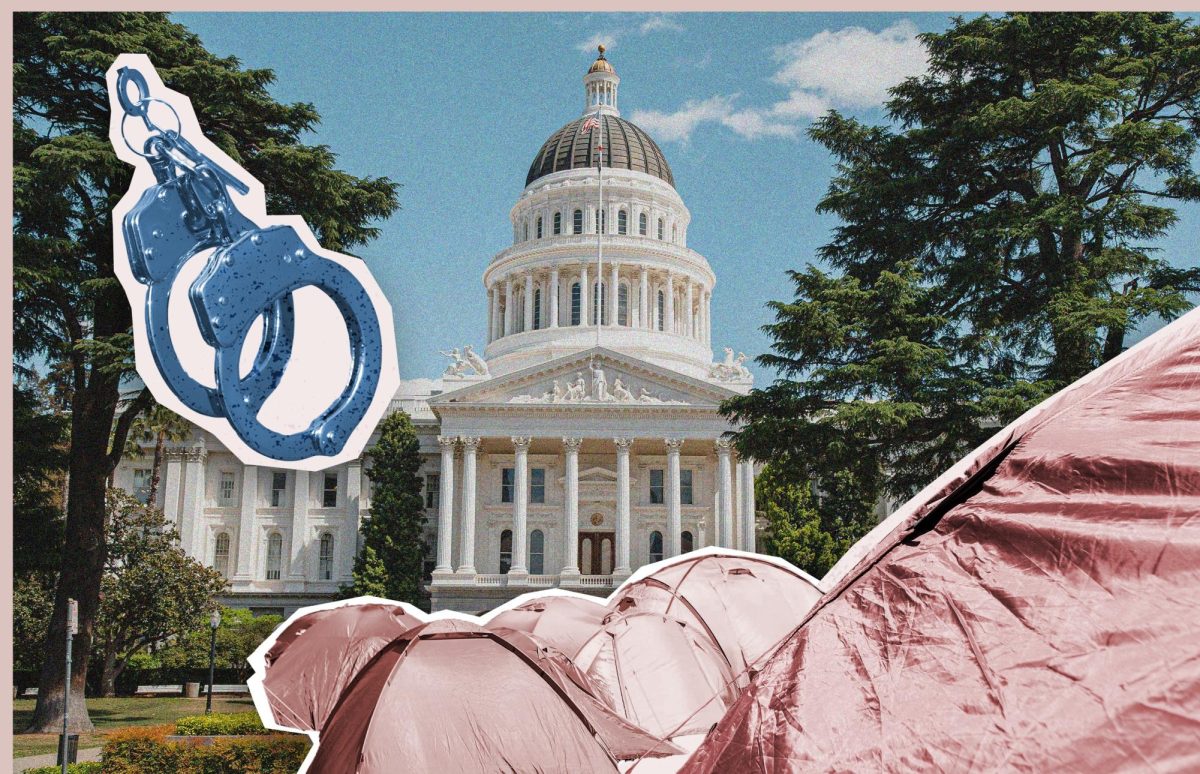During the 2024 election, California voters will have the opportunity to weigh in on whether stricter measures are necessary to address drug addiction, crime, and homelessness in the state. This stance will be reflected in whether voters support or oppose the proposed changes of Proposition 36. While the proposition may seem ideal on paper as the logical solution to a pressing issue, it fails to tackle the root cause and vilifies those in need, pushing them further into crisis.
Proposition 36 aims to address these pressing issues in California through harsh penalties for certain theft and drug trafficking by charging these offenses as felonies. It introduces severe “three-strikes” sentencing for low-level, nonviolent drug and theft offenses. For instance, individuals with two prior theft convictions would face a felony charge for any shoplifting regardless of the amount stolen. This would essentially mean longer prison sentences and an increased budget for our prisons as they’d be refilled with nonviolent drug and petty theft crimes.
The current proposition was created as a response to a past criminal justice reform measure, Proposition 47, with the belief that it raised crime and homelessness. Passed in 2014 with more than half of voter support, Proposition 47 reduced penalties for six nonviolent drug and property crimes from felonies to misdemeanors as a means to address prison overcrowding. The proposition mandates using reduced incarceration savings towards programs that aim to lower recidivism and assist crime victims. One of those programs is Project imPACT, which offers employment, behavioral health, and legal aid to formerly incarcerated individuals in several Los Angeles regions. According to the California Budget and Policy Center, the proposition has allocated over $800 million in savings to behavioral health treatment and other essential services for community safety.
Not only will Proposition 36 gut these critical social services, as funds will go back into the prison system, but its harsh measures will deter individuals from even seeking the help they need. It creates an even greater stigma around drug addiction, hampering recovery efforts due to the fear of prosecution.
Despite claims made by proponents of Proposition 36, Proposition 47 is not to be blamed for the recent surge in crime throughout California. A 2018 study conducted by the University of California Irvine, found no link between Proposition 47 and an uptick in violent crimes or property offenses after applying rigorous statistical testing. Actually, Proposition 36 fails to conceptualize the effects of the COVID-19 pandemic when addressing the spike in crime and homelessness. During this time, many individuals lost their job(s), struggling both financially and mentally. In turn, we saw crime rates peak exponentially, with the highest rates since 2000 in the United States. Crime levels rose nationally, from red to blue states, not just in California. It is a cheap shot to blame the after-effects of approving Proposition 47 as the rise in crime is much more complex than that.
Given that this measure guarantees an increase in arrests and incarceration, we may see an immediate decline in the number of individuals living on the street who are using drugs. However, immediate effects do not guarantee long-term solutions. Once individuals complete their sentence, a criminal record significantly reduces their chances of securing employment, and Proposition 36 limits their access to the support needed to get back on their feet. It is also a false assumption that the prison system effectively rehabilitates drug addicts, as there are drug networks that operate within the prison system. Former inmates will likely end up back on the streets upon their release or back in prison. We will see prisons refilling with individuals convicted of nonviolent offenses instead of focusing on more serious crimes, which seems pretty counterproductive in fighting for public safety.
When advocating for punitive punishments to improve public safety, we revert to the tactics of the War on Drugs, which has held ongoing consequences for marginalized communities. Studies show that black and white people use marijuana at equivalent rates, yet black people are four times more likely to get arrested. A 2023 study using anonymized smartphone data from over 10,000 police officers in 23 major U.S. cities further illustrates this disparity, finding that increased police presence in black communities correlates to higher arrest rates. Consequently, Prop. 36 would only deepen racial disparities that already exist in the policing of communities of color.
The War on Drugs was an epic failure driven by a hidden agenda that has become clear in hindsight. It brings me to two questions: Does Proposition 36 serve a similar purpose? Have we truly learned from past mistakes? Punitive punishments do not address the root cause of drug addiction, theft, or homelessness. While there is room for improvement in mitigating this complex issue, Proposition 36 is not the solution.







